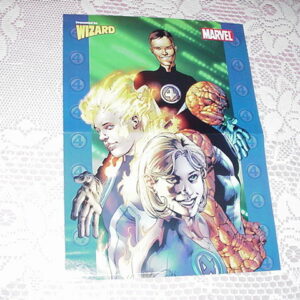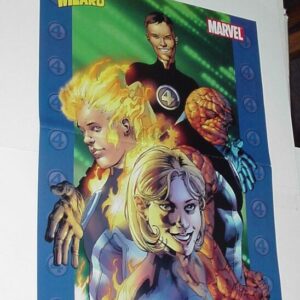Description
Star Trek IV: The Voyage Home is a 1986 American science fiction film released by Paramount Pictures. It is the fourth feature film in the film series and completes the story arc begun in The Wrath of Khan and continued in The Search for Spock. Intent on returning home to Earth to face trial for their crimes, the former crew of the USS Enterprise finds the planet in grave danger from an alien probe attempting to contact now-extinct humpback whales. The crew travel to Earth’s past to find whales who can answer the probe’s call.
After directing The Search for Spock, cast member Leonard Nimoy was asked to direct the next feature, and given greater freedom regarding the film’s content. Nimoy and producer Harve Bennett conceived a story with an environmental message and no clear-cut villain. Dissatisfied with the first screenplay produced by Steve Meerson and Peter Krikes, Paramount hired The Wrath of Khan writer and director Nicholas Meyer. Meyer and Bennett divided the story between them and wrote different parts of the script, requiring approval from Nimoy, lead actor William Shatner, and Paramount.
Principal photography commenced on February 24, 1986. Unlike previous Star Trek films, The Voyage Home was shot extensively on location; many real settings and buildings were used as stand-ins for scenes set around and in the city of San Francisco. Special effects firm Industrial Light & Magic (ILM) assisted in postproduction and the film’s special effects. Few of the humpback whales in the film were real: ILM devised full-size animatronics and small motorized models to stand in for the real creatures.
The Voyage Home premiered on November 26, 1986, in North America, becoming the top-grossing film in the weekend box office. The film’s humor and unconventional story were well received by critics, fans of the series and the general audience. It was financially successful, earning $133 million worldwide.
The film earned several awards and four Academy Award nominations for its cinematography and audio. It was dedicated to the crew of the Space Shuttle Challenger, which broke up 72 seconds after takeoff on the morning of January 28, 1986. Principal photography for The Voyage Home began four weeks after Challenger and her crew were lost. A sequel titled Star Trek V: The Final Frontier was released on June 9, 1989.
Despite Shatner’s doubts, Nimoy and Bennett selected a time travel story in which the Enterprise crew encounters a problem that could only be fixed by something only available in the present day (the Star Trek characters’ past). They considered ideas about violin makers and oil drillers, or a disease that had its cure destroyed with the rainforests. “But the depiction of thousands of sick and dying people seemed rather gruesome for our light-hearted film, and the thought of our crew taking a 600-year round trip just to bring back a snail darter wasn’t all that thrilling,” explained Nimoy. The director read a book on extinct animals and conceived the storyline that was eventually adopted. Nimoy hit upon the idea of humpback whales after talking with a friend—their song added mystery to the story, and their size added logistical challenges the heroes would have to overcome.
When Kirk and Spock are traveling on a public bus, they encounter a punk rocker blaring his music on a boom box, to the discomfort of everyone around him. Spock takes matters into his own hands and performs a Vulcan nerve pinch. Part of the inspiration for the scene came from Nimoy’s personal experiences with a similar character on the streets of New York; “I was struck by the arrogance of it, the aggressiveness of it, and I thought if I was Spock I’d pinch his brains out!” On learning about the scene, Kirk Thatcher, an associate producer on the film, convinced Nimoy to let him play the role; Thatcher shaved his hair into a mohawk and bought clothes to complete the part. Credited as “punk on bus”, Thatcher (along with sound designer Mark Mangini) also wrote and recorded “I Hate You”, the song in the scene, and it was his idea to have the punk—rendered unconscious by the pinch—hit the stereo and turn it off with his face.
James Montgomery “Jimmy” Doohan (March 3, 1920 – July 20, 2005) was a Canadian character and voice actor best known for his role as Montgomery “Scotty” Scott in the television and film series Star Trek. Doohan’s characterization of the Scottish Chief Engineer of the Starship Enterprise was one of the most recognizable elements in the Star Trek franchise, for which he also made several contributions behind the scenes. Many of the characterizations, mannerisms, and expressions that he established for Scotty and other Star Trek characters have become entrenched in popular culture.
Following his success with Star Trek, he supplemented his income and showed continued support for his fans by making numerous public appearances. As a result of his portrayal of Scotty, Doohan inspired many fans to pursue careers in engineering and other technical fields.
Doohan developed a talent for accents as a child. Auditioning for the role of Chief Engineer of the USS Enterprise, before Gene Roddenberry (the creator of Star Trek), Doohan did several different accents. Roddenberry asked which he preferred, and Doohan replied “Well, if you want an engineer, he better be a Scotsman because, in my experience, all the world’s best engineers have been Scottish”. He chose the name “Montgomery Scott” after his grandfather.
In later years, Doohan reenacted this casting process at Star Trek conventions, demonstrating a variety of possible voices and characters. When Roddenberry produced Star Trek: The Animated Series in the early 1970s, he exploited Doohan’s versatility by having him perform most of the guest male roles, including that of Robert April, which the show cited as the Enterprise’s first captain. Doohan was the alien navigator Lieutenant Arex, and provided seven different voices for another episode.
The Scott character was originally conceived as semi-regular; but along with fellow cast members Leonard Nimoy (Spock) and DeForest Kelley (Dr. McCoy), Doohan’s character was elevated in importance to leads alongside William Shatner’s Captain James T. Kirk. It was established that, owing to his high technical skills, Lt. Cmdr. Scott was the third-in-command of the Enterprise, and at times the ship was left in his care. Scott was frequently used in subplots regarding disabled ship components (such as the dilithium crystals which regulated the warp drive, the transporter teleportation device, or just fiddling in the Jefferies tubes) and as a foil for Kirk’s ambitious tactical approaches, which often strained the starship’s propulsion and/or defenses to their limits (“I cannae push it any faster, Captain!” or “I cannae guarantee that she’ll hold up!”). In this capacity, Scott proved his resourcefulness in demanding technical situations, often holding the Enterprise together with little more than a few spare parts and some Scottish stubbornness. In the end, many fans saw the Enterprise itself as the show’s star, leaving Scott in the enviable position of her defender. For example, in “The Trouble With Tribbles”, Scott stands idly by and even keeps Chekov from starting any trouble as a Klingon insults Kirk; however, Scott is finally provoked into violence when the Klingon insults the Enterprise herself.
Doohan was quoted as saying, “Scotty is ninety-nine percent James Doohan and one percent accent.” Using his considerable vocal skills, Doohan devised the Vulcan and Klingon language dialogue heard in Star Trek: The Motion Picture. Later, professional linguists, particularly Marc Okrand, expanded Klingon into a fully constructed language with a working grammar. In addition to playing Scotty, Doohan also did many guest voices.
Although he continued to work with William Shatner in the Star Trek films, in private life Doohan didn’t get along well with Shatner and was once quoted as saying, “I like Captain Kirk, but I can’t say that I’m very fond of Bill.” As the only former Star Trek co-star, Doohan declined to be interviewed by Shatner for Shatner’s first Star Trek: Memories book about the show, nor did he consent to do so for Shatner’s follow-up book, Star Trek: Movie Memories, though Shatner mentioned in the latter that the icy relationship between the two started to thaw, when both men were working on Star Trek Generations in 1993-1994. At Doohan’s final August 2004 convention appearance, Doohan and Shatner appeared to have mended their relationship.
Near mint condition.
Related products
-


G.I. Joe Poster # 3 Cobra Commander Storm Shadow vs Snake Eyes and Billy by Mike Zeck
$34.99 Add to cart -


Ultimate Fantastic Four Poster # 1 Bryan Hitch Reed Johnny Sue Ben
$39.99 Add to cart -


Punisher Poster # 6 by Wieslaw Walkuski Born Frank Castle Origin Movie
$29.99 Add to cart -


X-Men Poster #35 Mystique Mike Mayhew Skull HOT # 9 Cover
$34.99 Add to cart


